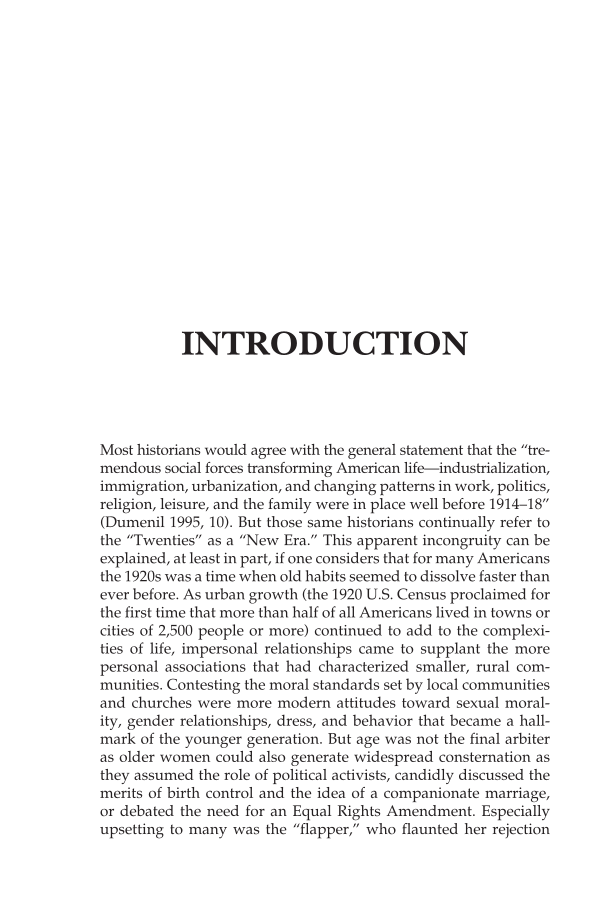Most historians would agree with the general statement that the “tre- mendous social forces transforming American life—industrialization, immigration, urbanization, and changing patterns in work, politics, religion, leisure, and the family were in place well before 1914–18” (Dumenil 1995, 10). But those same historians continually refer to the “Twenties” as a “New Era.” This apparent incongruity can be explained, at least in part, if one considers that for many Americans the 1920s was a time when old habits seemed to dissolve faster than ever before. As urban growth (the 1920 U.S. Census proclaimed for the first time that more than half of all Americans lived in towns or cities of 2,500 people or more) continued to add to the complexi- ties of life, impersonal relationships came to supplant the more personal associations that had characterized smaller, rural com- munities. Contesting the moral standards set by local communities and churches were more modern attitudes toward sexual moral- ity, gender relationships, dress, and behavior that became a hall- mark of the younger generation. But age was not the final arbiter as older women could also generate widespread consternation as they assumed the role of political activists, candidly discussed the merits of birth control and the idea of a companionate marriage, or debated the need for an Equal Rights Amendment. Especially upsetting to many was the “flapper,” who flaunted her rejection INTRODUCTION
Document Details My Account Print multiple pages
Print
You have printed 0 times in the last 24 hours.
Your print count will reset on at .
You may print 0 more time(s) before then.
You may print a maximum of 0 pages at a time.


























































































































































































































































































